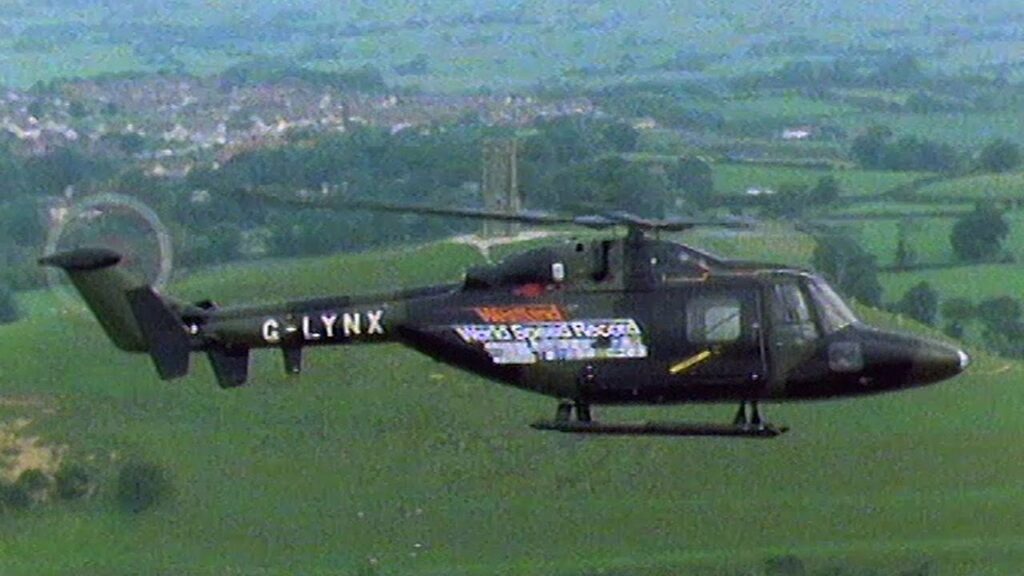History and Development of the Westland Lynx
The Westland Lynx is a British multi-purpose military helicopter that has a rich and interesting history. The initial development of this renowned aircraft began in the late 1960s when the British Army and Royal Navy expressed a need for a new, advanced helicopter. Westland Helicopters took on the project and the first prototype, initially called the Westland WG.13, took flight for the first time on March 21, 1971.
Design and Production
The Westland Lynx underwent numerous design changes and modifications during its development phase. It was originally designed with a fully articulated rotor system, a first for any British helicopter. The use of advanced materials and technologies made the Lynx a pioneer in its class. The first production model, the Lynx HAS.2, entered service with the Royal Navy in 1976.
Service and Upgrades
The Westland Lynx has served with distinction in various roles and missions over the years. It saw action in the Falklands War in 1982, and has been used in anti-submarine warfare, search and rescue, and utility roles. In the late 1980s, the Lynx was upgraded with the addition of Gem engines and more advanced avionics, resulting in the Lynx Mk.8.
Over the years, the Westland Lynx has undergone numerous upgrades and modifications to keep it at the forefront of military aviation technology. This includes the addition of advanced radar systems, new engines, and more efficient rotor blades. The Lynx continues to be a vital part of the British militarys aviation capabilities, showcasing the success and longevity of this remarkable aircraft.
Technical Specifications of the Westland Lynx Helicopter
The Westland Lynx is a versatile and dynamic multi-purpose military helicopter developed by British Aerospace companies. Its impressive technical specifications make it an invaluable asset for military and civilian operations alike.
Engine and Performance
The Westland Lynx is powered by two Rolls-Royce Gem 42-1 turboshaft engines, each producing 1,120 shaft horsepower. This allows the helicopter to reach maximum speeds of up to 324 km/h (201 mph), making it one of the fastest helicopters in the world. The helicopter has a range of 528 km (328 miles) and a service ceiling of 3,500 m (11,500 ft). The Lynxs engine and performance specifications have been proven in various operations, ranging from maritime surveillance to anti-submarine warfare.
Dimensions and Weight
The Westland Lynx has a length of 15.24 m (50 ft), a height of 3.73 m (12 ft 3 in), and a rotor diameter of 12.8 m (42 ft). It has a maximum takeoff weight of 5,330 kg (11,750 lb), which allows it to carry a substantial payload. The spacious cabin can accommodate up to 9 troops or various equipment depending on mission requirements.
Armament
The Lynx is equipped with a robust armament system that includes TOW anti-tank missiles, Sea Skua anti-ship missiles, and a 7.62 mm machine gun. This potent armament, coupled with the Lynxs superior speed and maneuverability, makes it a formidable force in combat scenarios.
In terms of technical specifications, the Westland Lynx Helicopter stands out as a high-performance, versatile, and well-equipped aircraft. Its speed, power, and adaptability make it an invaluable tool in a variety of operational contexts.
The Role of the Westland Lynx in Military Operations
The Westland Lynx is a versatile, twin-engine military helicopter that has been extensively utilized in numerous military operations around the globe. Originating from the UK, this robust aircraft has played a pivotal role in a multitude of missions, ranging from anti-submarine warfare to casualty evacuation, demonstrating its vital importance in modern warfare.
Combat and Peacekeeping Missions
The Lynxs remarkable agility, speed, and lifting capacity have made it an invaluable asset in combat and peacekeeping missions. Its deployment in the Falklands War and both Gulf Wars underscores its utility in diverse and challenging operational scenarios. Notably, the Lynx has also been instrumental in humanitarian aid missions, such as those in Bosnia and Sierra Leone, where it delivered vital supplies and facilitated casualty evacuations.
Anti-Submarine and Anti-Surface Warfare
Equipped with advanced sonar systems and capable of carrying a range of anti-submarine torpedoes, the Westland Lynx has proven to be a formidable tool in anti-submarine warfare. In addition, its ability to carry anti-ship missiles makes it a potent force in anti-surface warfare. These capabilities have cemented the Lynxs role in naval operations, providing crucial support in maintaining sea control and maritime security.
Search and Rescue Operations
The Lynxs exceptional performance in adverse weather conditions and its capacity for rapid response have made it a trusted choice for search and rescue operations. Its impressive range and endurance enable it to reach remote areas, providing critical aid in times of emergency and disaster relief. The Westland Lynx continues to be a cornerstone of military operations, underscoring its enduring importance in the realm of defence and security.
Comparison: Westland Lynx vs Other Modern Helicopters
The Westland Lynx is a British multi-purpose military helicopter designed by Westland Helicopters. Since its inception, it has proven to be a formidable presence in the sky, but how does it compare to other modern helicopters?
Speed and Agility
One of the most notable characteristics of the Westland Lynx is its remarkable speed. It holds the current FAI absolute speed record for helicopters, clocking in at 400.87 km/h, a record it set in 1986 and still holds today. This makes it one of the fastest helicopters in operation, outpacing many of its modern counterparts. Furthermore, its agility and manoeuvrability are highly praised, making it an excellent choice for tactical missions where quick response times are essential.
Multi-purpose Capabilities
Like many modern helicopters, the Westland Lynx is multi-purpose, designed for both land and maritime operations. However, its versatility is particularly impressive. It has been successfully used in a range of roles, including search and rescue, anti-submarine warfare, and anti-surface warfare. This wide range of capabilities gives it an edge over many specialized helicopters, which may excel in one area but lack the Lynxs broad functionality.
Technology and Upgrades
While the Westland Lynx is an older model, having first entered service in the late 1970s, it has seen numerous upgrades that allow it to compete with more modern designs. Its avionics and weapons systems have been consistently updated, keeping it relevant in a rapidly evolving technological landscape. However, some newer helicopters may have an edge in terms of incorporating the latest technologies right from the design phase. This can include more advanced radar systems, stealth capabilities, and automation features.
Future Prospects and Upgrades for the Westland Lynx
The Westland Lynx is a British multi-purpose military helicopter that has proven its efficiency in various roles and missions. Its versatility and robust design have ensured its longevity and continuous demand in the global military market. With changing warfare dynamics, the Lynx is set for several upgrades to maintain its operational relevance.
Upcoming Upgrades
The Lynxs future upgrades are centered around enhancing its combat capabilities and operational efficiency. One of the significant upgrades will be the integration of advanced avionics systems to improve navigation and targeting accuracy. The Lynx is also set to receive a new generation of engines to boost its performance and endurance. The new engines will provide greater power, enabling the Lynx to operate in higher altitudes and hotter climates, thereby expanding its operational scope.
Armament Upgrades
The Lynxs armament system is also due for an upgrade. The new weapon system will be more versatile and capable of engaging a wider range of targets. The upgrades include the integration of advanced anti-tank missiles and improved countermeasures to increase the Lynxs survivability in hostile environments.
In addition, the Lynx is set to receive improvements in its communication systems, enabling better coordination with ground forces and other aerial assets. These upgrades are aimed at ensuring that the Westland Lynx continues to be a formidable force in future military operations.



